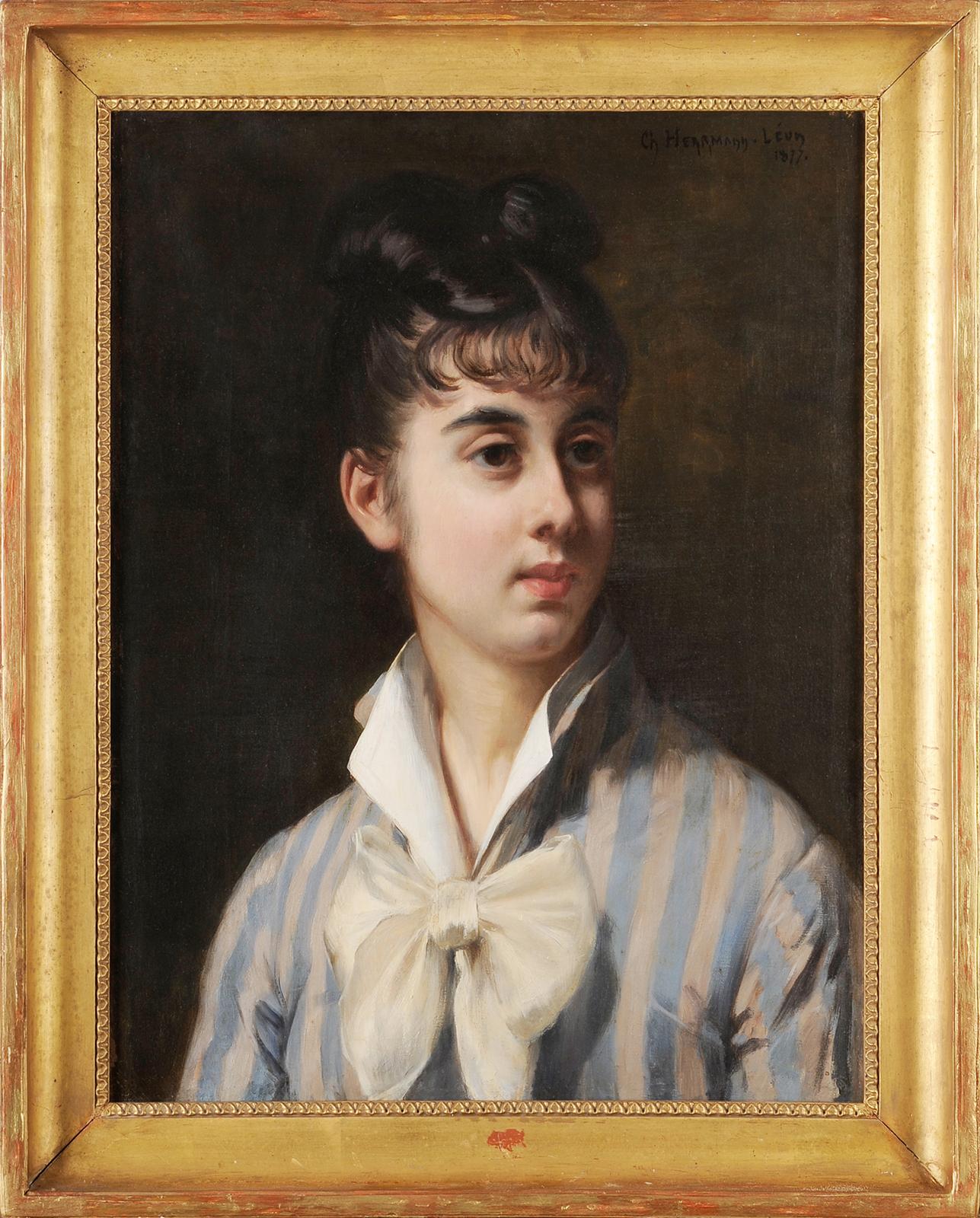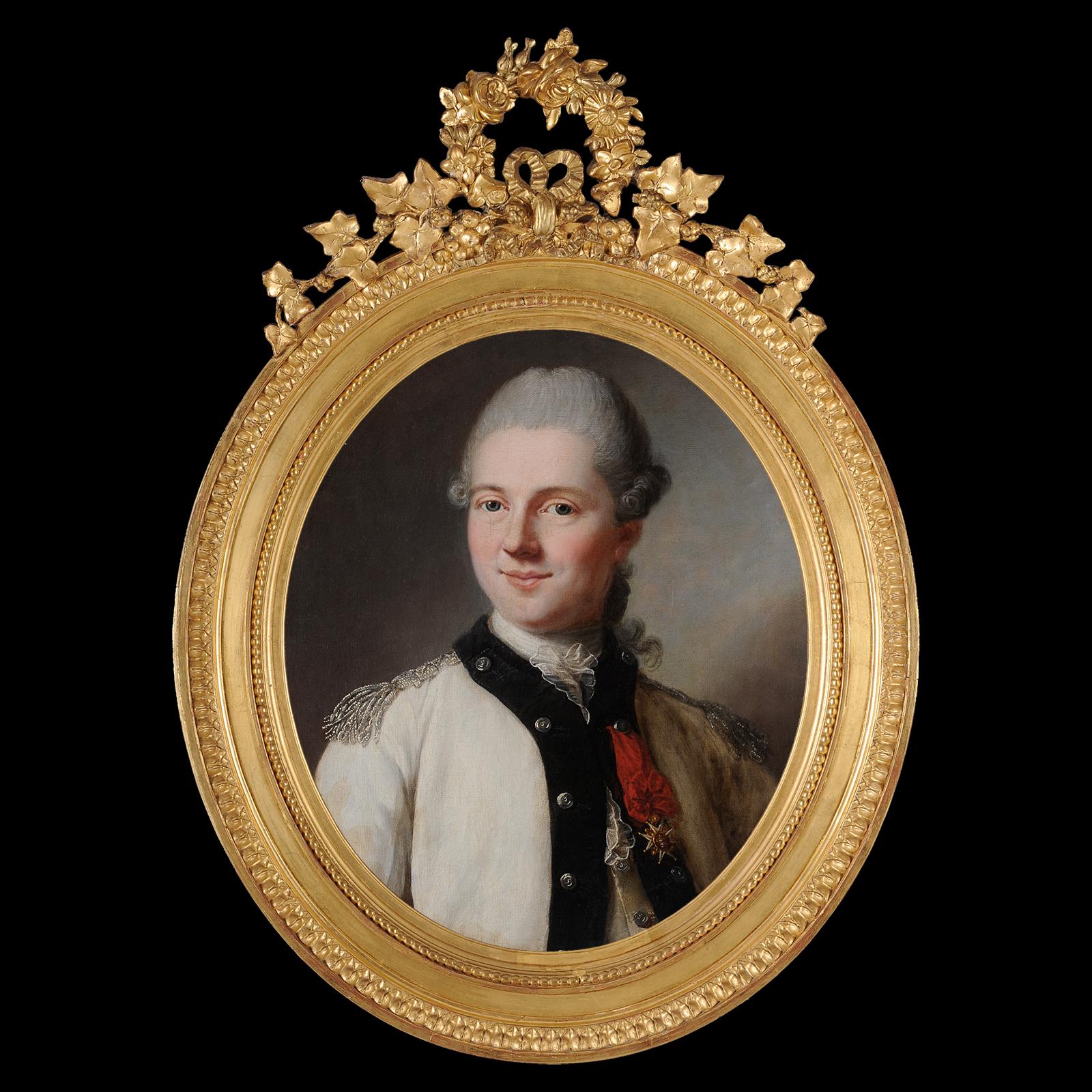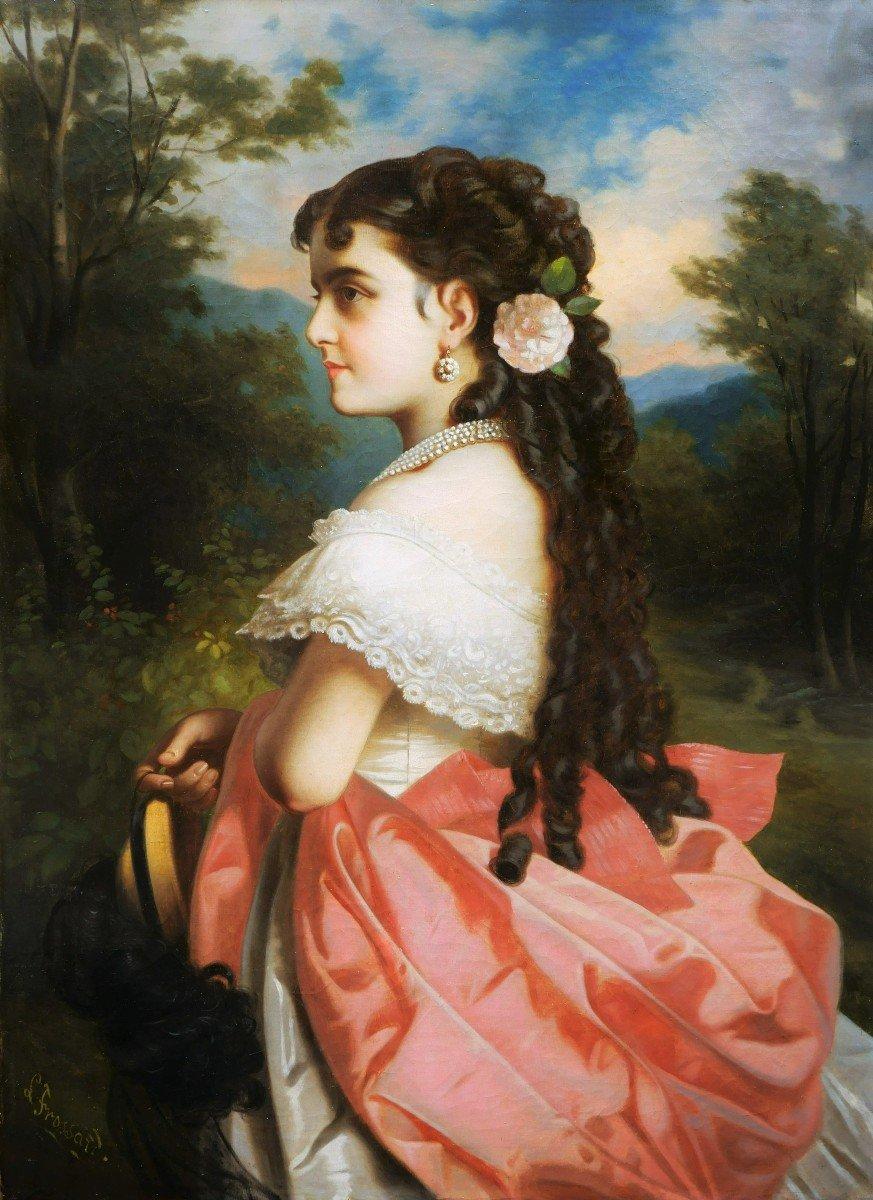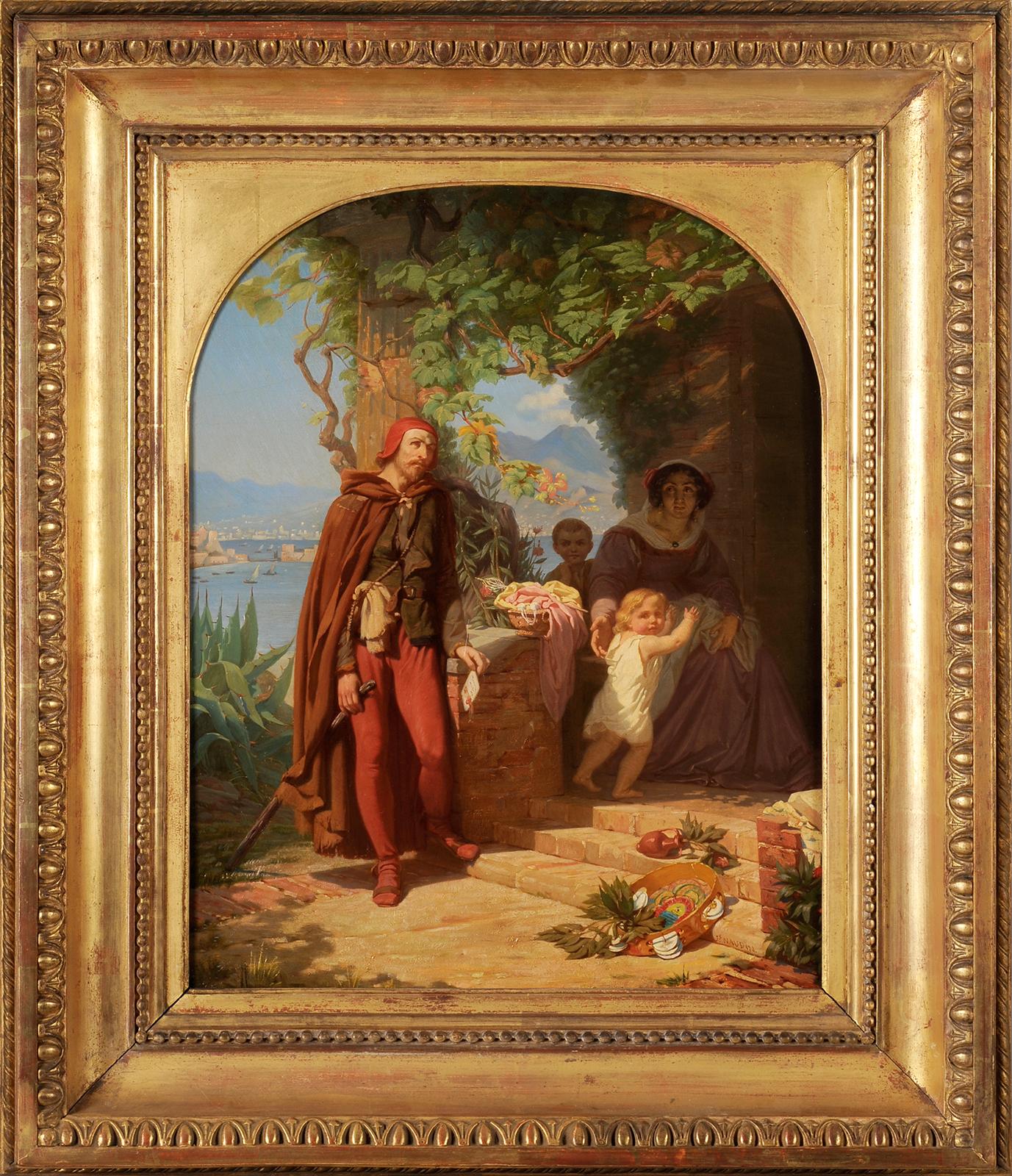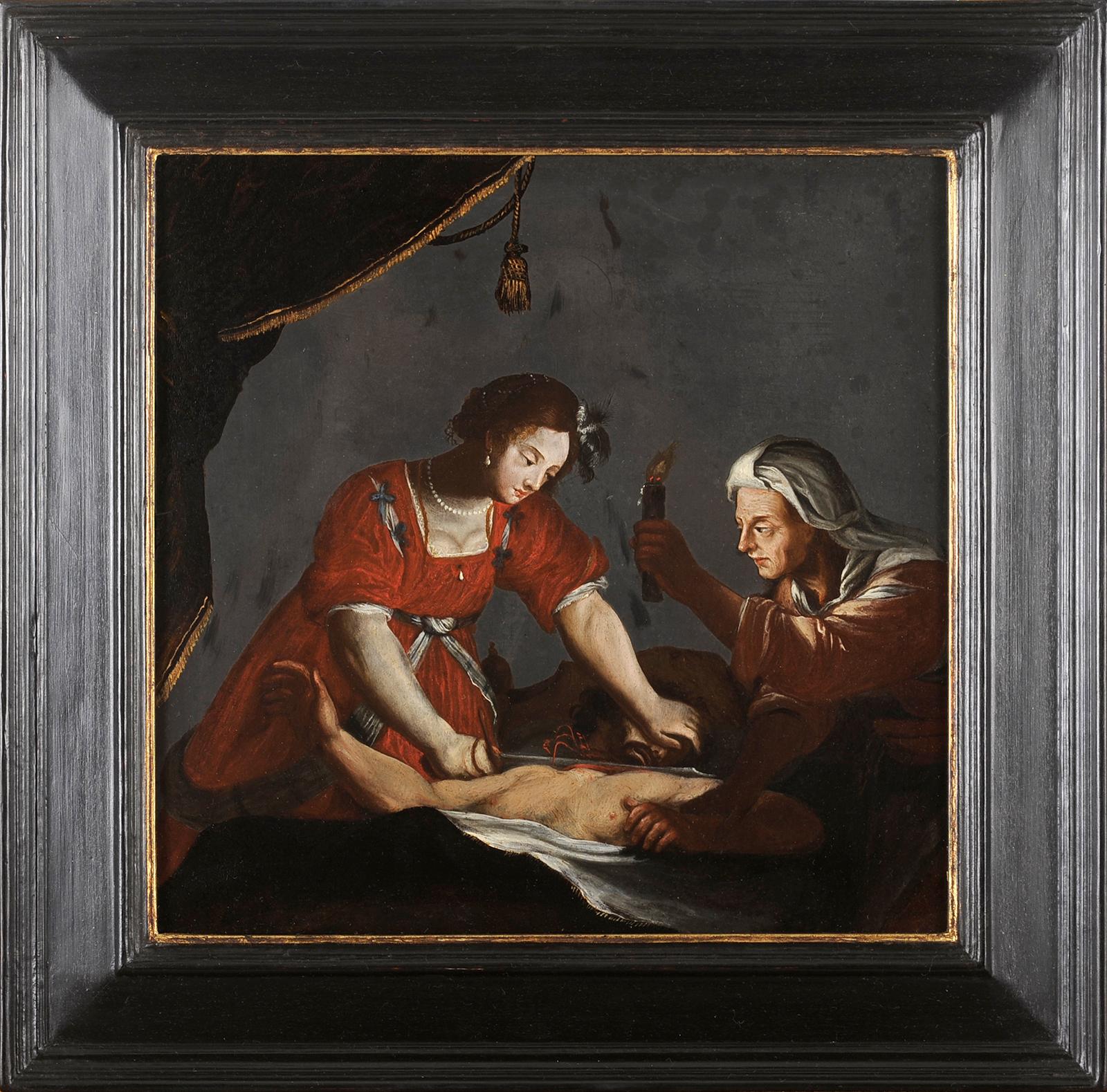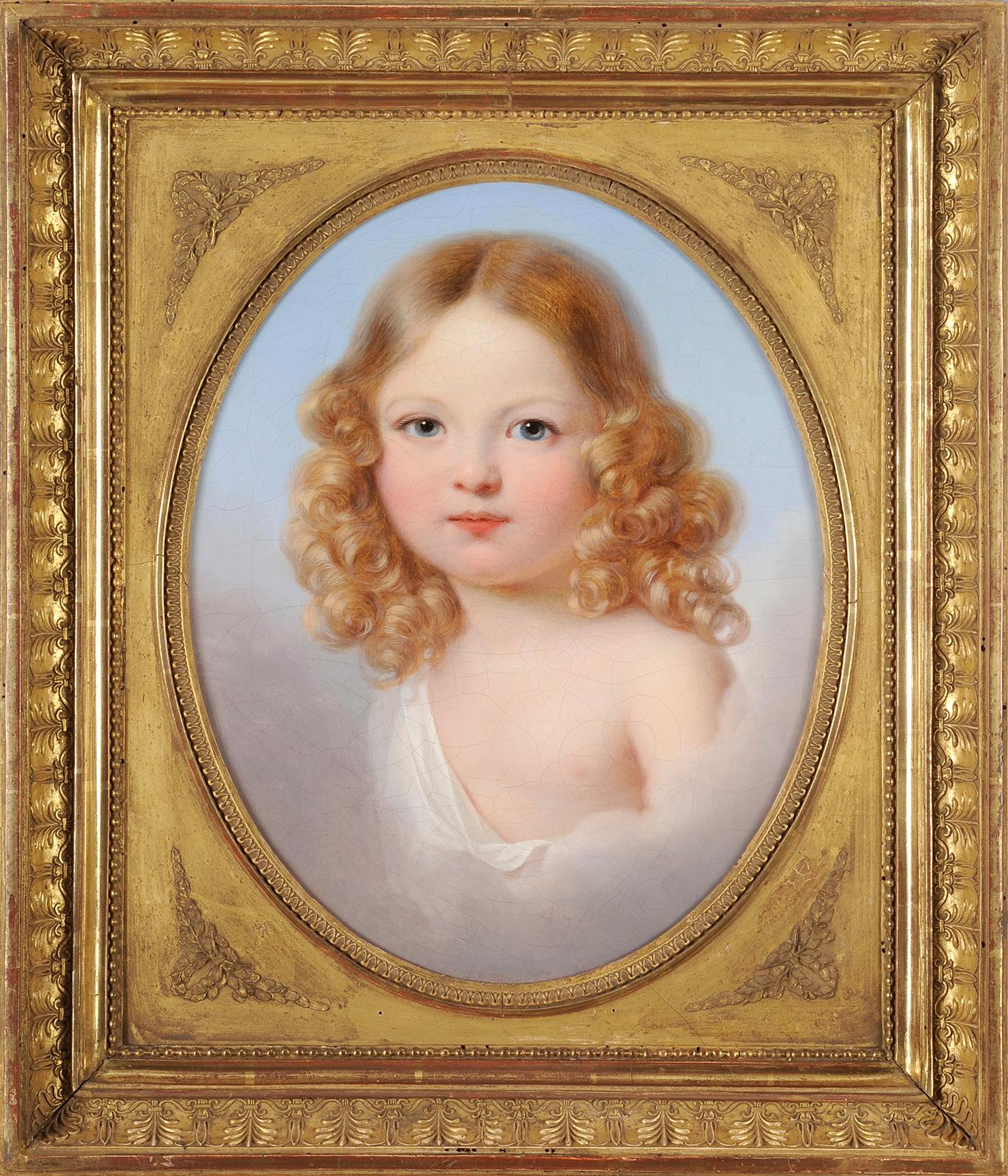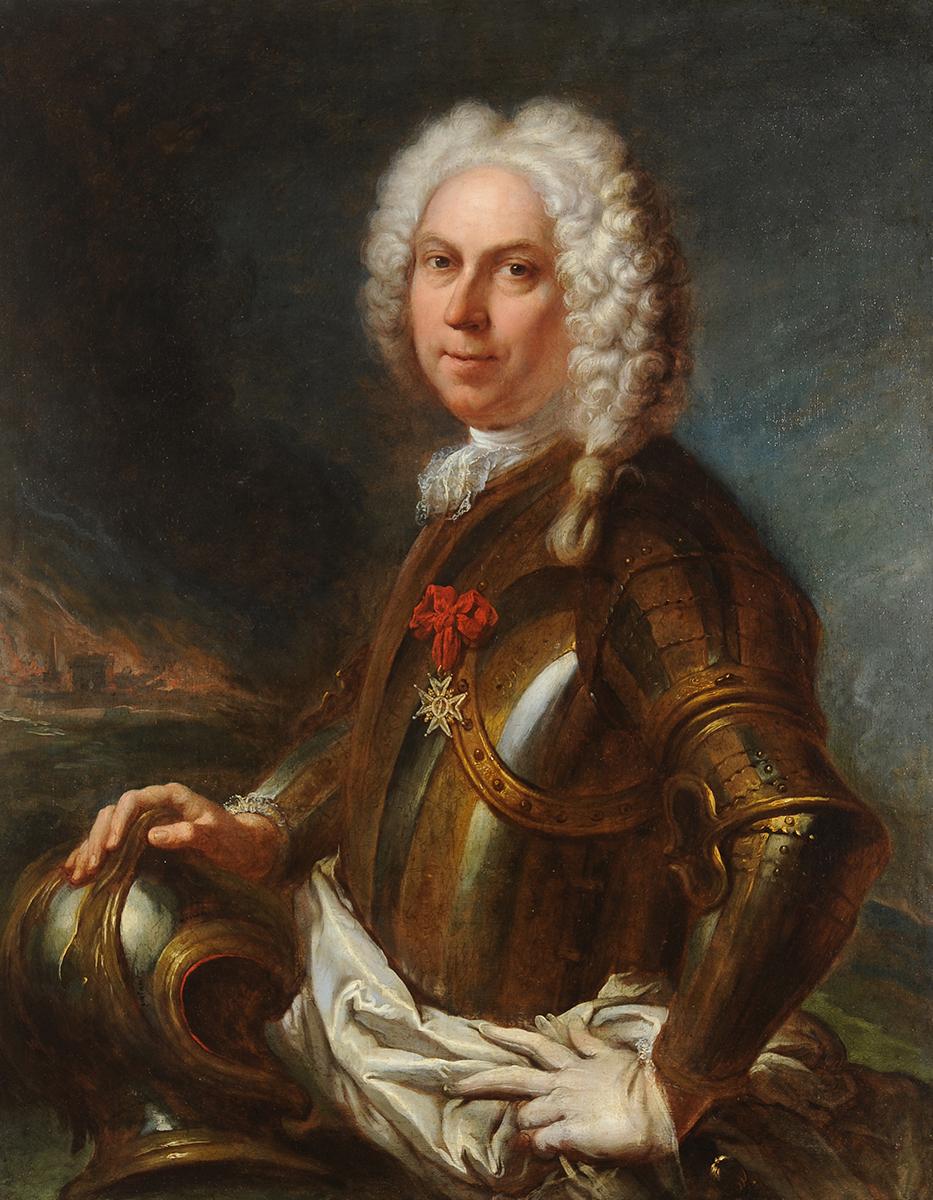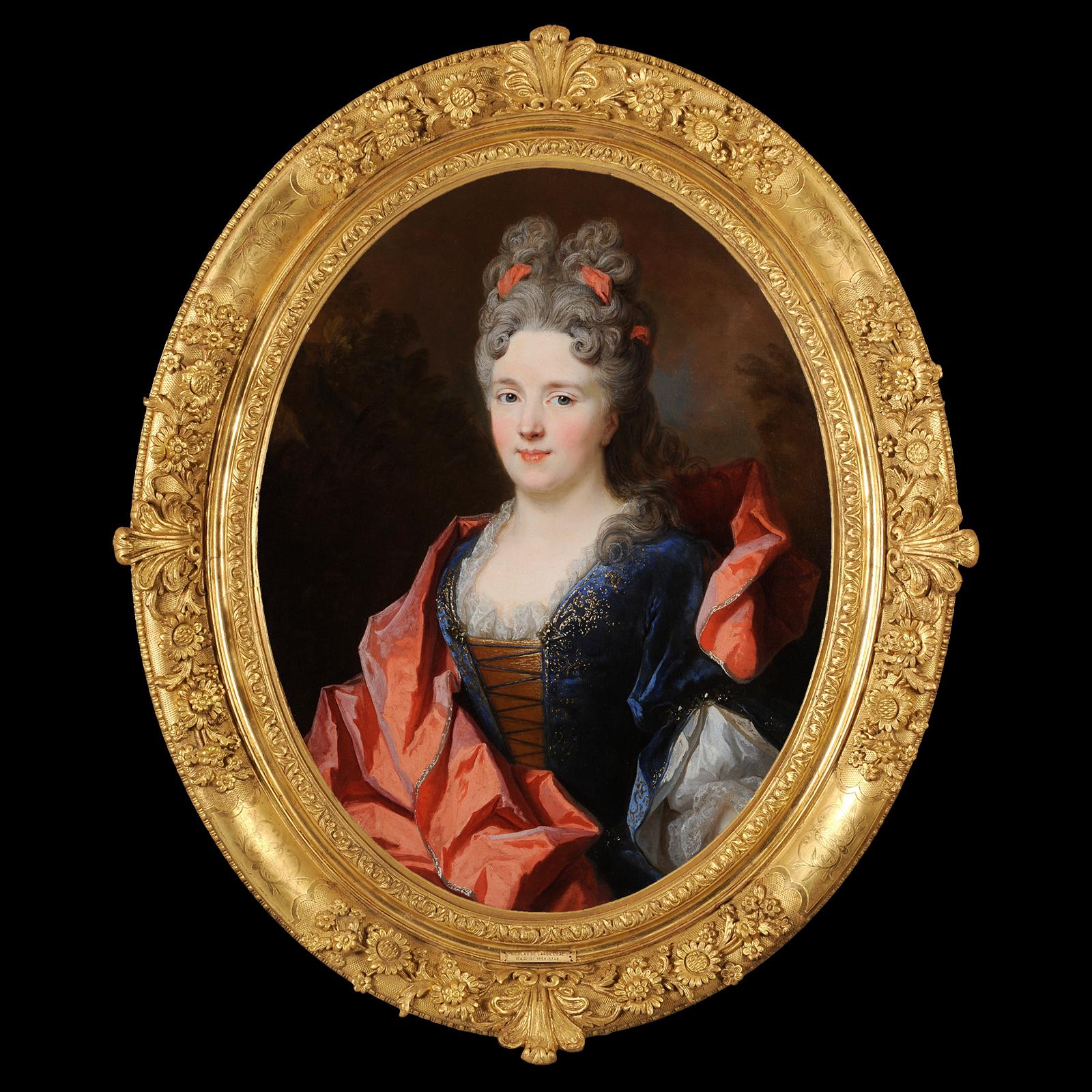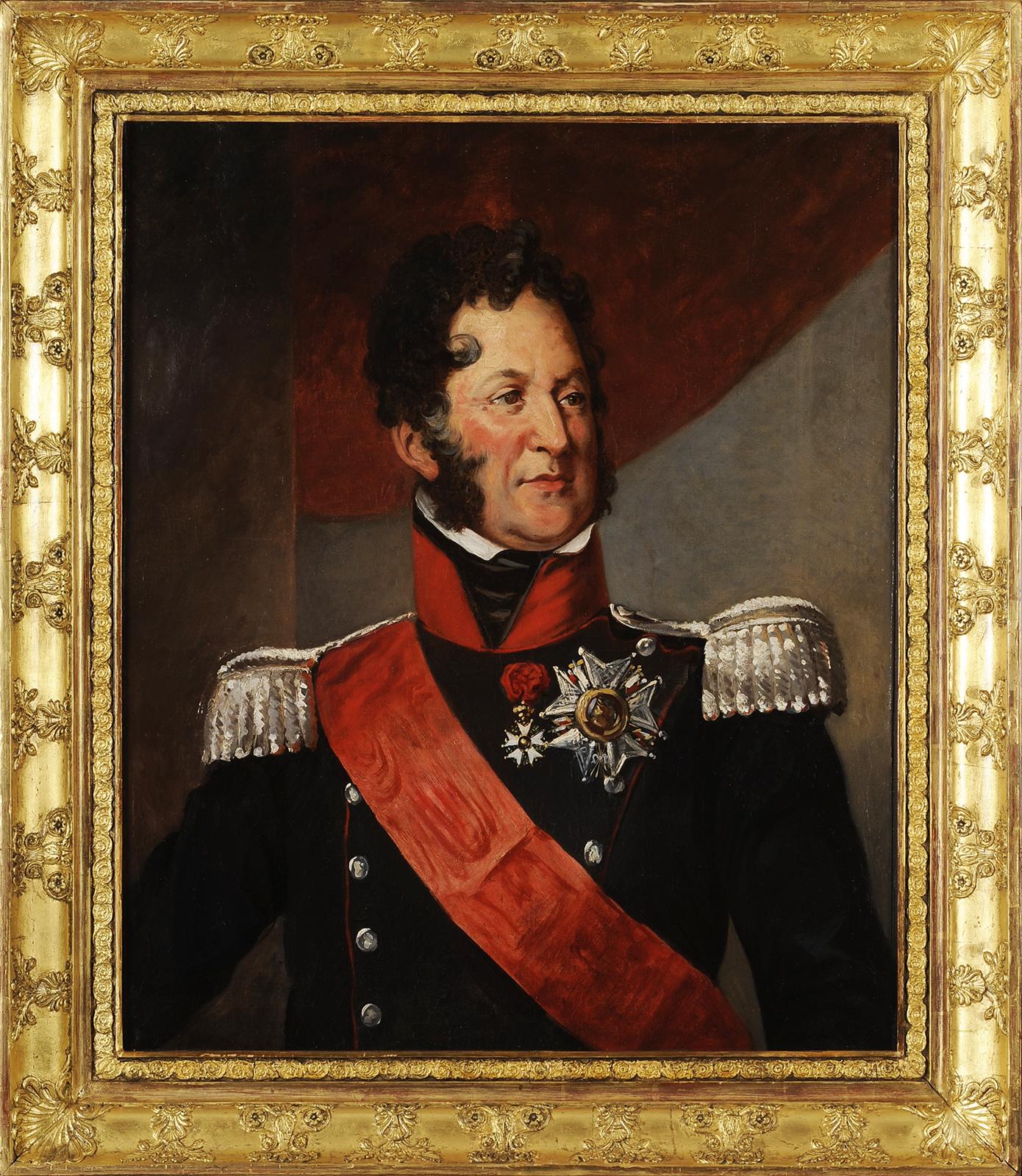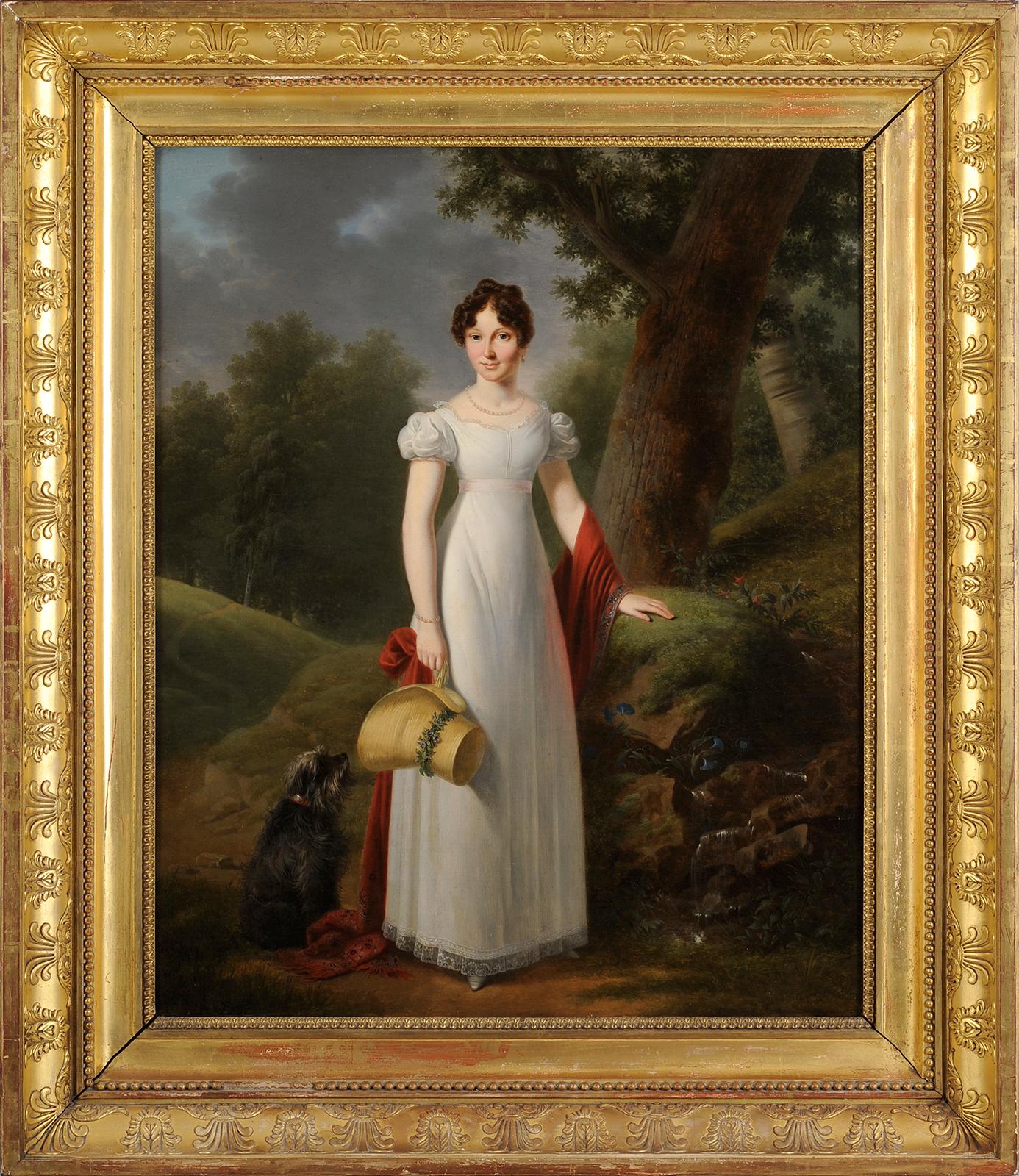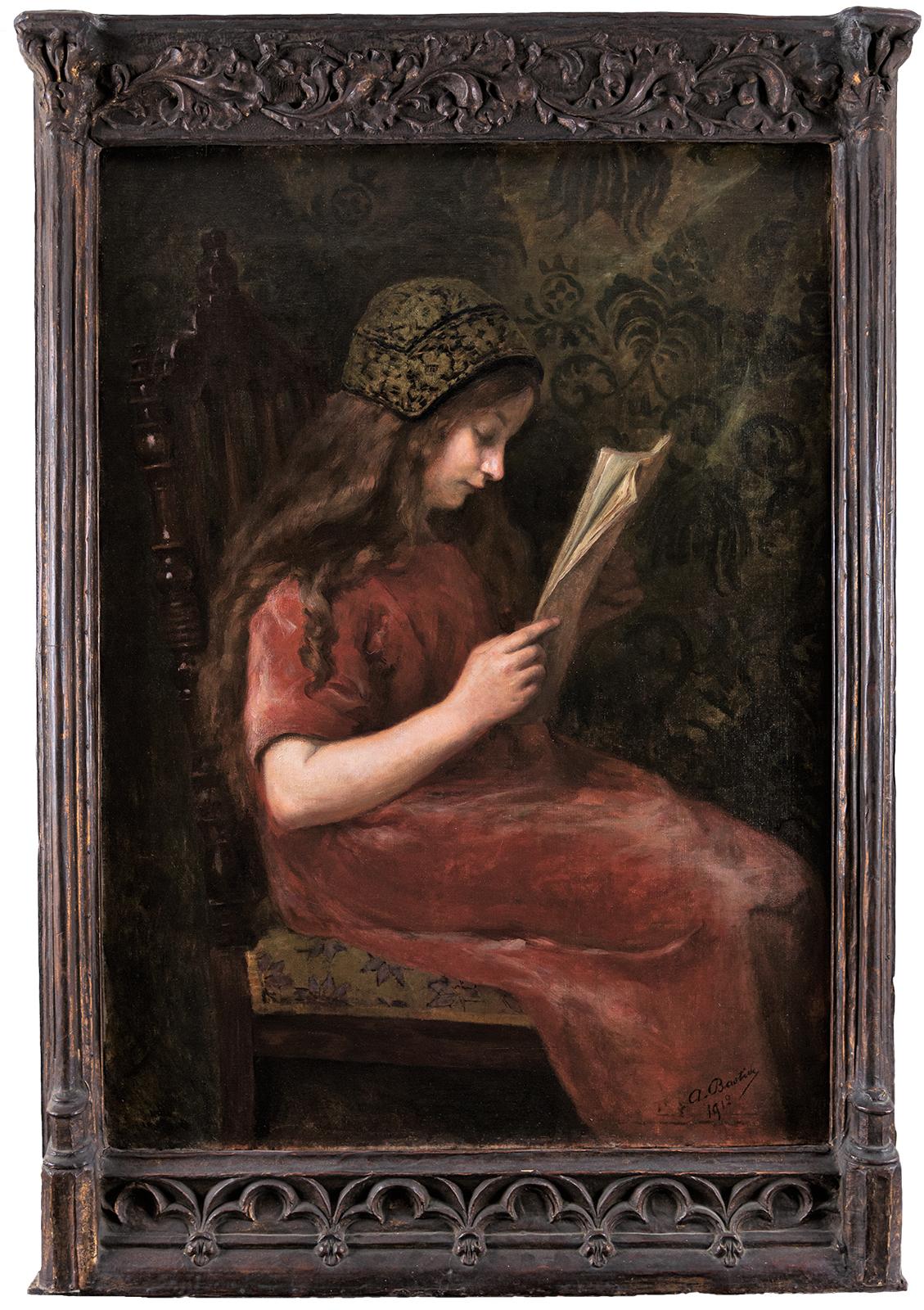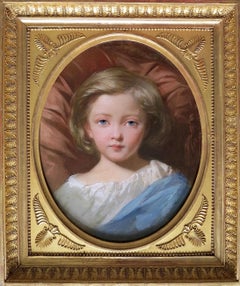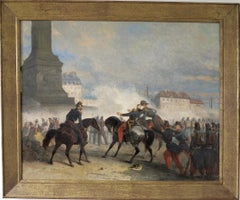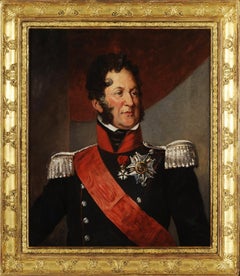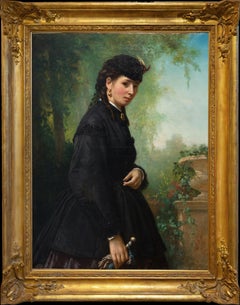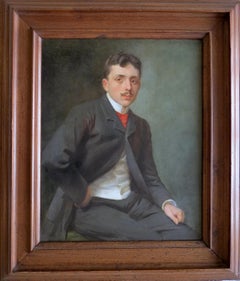
Portrait of young man sitting
View Similar Items
Want more images or videos?
Request additional images or videos from the seller
1 of 8
Auguste Joseph GIRARD de La BRELYPortrait of young man sitting1900
1900
About the Item
- Creator:Auguste Joseph GIRARD de La BRELY (1838 - 1906, French)
- Creation Year:1900
- Dimensions:Height: 16.15 in (41 cm)Width: 13 in (33 cm)
- Medium:
- Movement & Style:
- Period:
- Condition:
- Gallery Location:PARIS, FR
- Reference Number:Seller: T570 11 211stDibs: LU1954210222452
About the Seller
No Reviews Yet
Vetted Seller
These experienced sellers undergo a comprehensive evaluation by our team of in-house experts.
Established in 2014
1stDibs seller since 2022
7 sales on 1stDibs
More From This SellerView All
- Portrait of a child with blue eyesBy Charles Zacharie LandelleLocated in PARIS, FRCharles Zacharie LANDELLE (Laval, 1821 – Chennevières/Marne, 1908) Portrait of a child with blue eyes Oil on canvas Monogrammed and dated lower l...Category
Mid-19th Century French School Portrait Paintings
MaterialsOil
- The death of General Négrier on Place de la Bastille, Paris - FranceBy Nicolas Edward GabéLocated in PARIS, FRNicolas Edward GABE (Paris, 1814 - Paris, 1865) The death of General Négrier on Place de la Bastille on June 25, 1848 Oil on canvas Signed and dated lower right 82 x 101 cm 1849 Nicolas Edward Gabé is a 19th century artist who is still little studied to this day and yet seems to have enjoyed, according to the artistic press of the time, a certain notoriety, in particular for his seascapes. The few bibliographical elements that we have come from the Salon booklets and tell us that the artist was born in Paris in 1814, therefore shortly before the end of the Empire. No elements on his artistic training are mentioned in the booklets, we just know that Gabé exhibited at the Paris Salon from 1835 to 1864 where he first practiced miniature then then approached easel painting, risking himself as well in still life that the seascapes, the landscape, the portrait or the hunting. According to press articles, he also took part in various exhibitions in the provinces such as Boulogne-sur-Mer and Marseille. Notably, Gabé did not exhibit at the Salon his large historical canvases on the revolution of 1848, which today are of obvious documentary and iconographic interest; probably for political reasons which are easily understandable to us today in view of the historical events of then. Gabé died in Paris at the age of 51 on January 4, 1865 with a mention in the January 7, 1865 edition of L'Union des Arts: “The death of Mr. Gabé, painter, well known in the export trade in paintings as well as to the auctioneers' hotel, whose sales it supplied through its numerous navies. “ "On June 25, 1848, in front of the barricades erected in the Bastille by the insurgents of the Red Republic, General Négrier fell to death, while he was uttering words of order and conciliation". Here are the opening lines of the tribute paid by Colonel Borgarelli d´Ison, friend of General Négrier. General Négrier belonged to a family from Maine, brought back by Marshal Lannes from emigration. Born in Le Mans on April 27, 1788, François Marie Casimir de Négrier entered, barely 18, as a volunteer in the 2nd Light Infantry Regiment. He began in 1806 with the campaigns of Prussia and Poland, during which he earned, through his bravery, the rank of sergeant and the decoration of the Legion of Honor. He made the following campaigns in Spain and Portugal, and left, with his regiment, only for the campaign of France, in 1814, after having risen successively, by actions of brilliance and by a serious wound, to the ranks of head of battalion and officer of the Legion of Honor, with which he was provided from October 1813. The Restoration retained his rank in his regiment. After having fought and wounded a second time seriously in Waterloo, Négrier was recalled in 1816 under the second Restoration. He was appointed, in 1825, lieutenant-colonel, then colonel in 1830, brigadier general in 1836, and of division in 1841. From March 1837 he participated in the conquest of Algeria. The Revolution of 1848 found Negrier in possession of the important command of the 16th Military Division in Lille. Quaestor of the Assembly in these times which promised to be troubled, Négrier reviewed the Place de la Concorde on June 23 at around noon various mobile guard battalions. He then took the head of 2,000 men provided by the 10th and 11th legions of the national guard and bivouacked on the Place du Palais until the next day 24. On Sunday 25 at nine o'clock, the Négrier division resumed the fight towards the Saint suburb. -Antoine. The troop gains continual advantages. At around two o'clock the column of Négrier had seized the Pont Marie: it had removed the barricades from the Quai Saint-Paul, the rue de l'Etoile, the rue des Barres...Category
Mid-19th Century French School Figurative Paintings
MaterialsOil
- Souvenir from Italy: Pifferaro playing the zampogna with the familyLocated in PARIS, FRJoseph BEAUME (Marseille, 1796 – Paris, 1885) Souvenir from Italy: pifferaro playing the zampogna with the family Oil on canvas Signed lower left 73.5 x 60 cm Provenance: probably...Category
Mid-19th Century French School Figurative Paintings
MaterialsOil
- Blue macaw perched on a branchBy Jean-Baptiste OudryLocated in PARIS, FRFrench school of the second half of the 19th century, follower of Oudry Blue macaw perched on a branch Oil on canvas 73 x 60 cmCategory
Late 19th Century French School Portrait Paintings
MaterialsOil
- Portrait of Jean Claude Pellegrini (1787-1854)Located in PARIS, FRFrançois Jean SABLET (Morges, 1745 – Nantes, 1819) Portrait of Jean Claude Pellegrini (1787-1854) Honorary Divisional Inspector of Bridges and Roads. Oil on canvas Monogrammed and dated lower right 30x25cm 1819 Painter of portraits, Jean François Sablet, originally from Morges, born November 23, 1745, is the eldest son of Jacob Sablet (1720–1798), bourgeois of this city, house painter, gilder, art dealer, and Suzanne Dupuis (1722–1775), settled in Lausanne from 1754. In 1767, on June 8, he prepared to leave to “improve in the art of painting” with a viaticum from the Council of Morges and a scholarship from Bern. In Paris, he was a pupil of Joseph-Marie Vien at the Royal Academy (1768–73). In 1772, he was joined by his younger brother Jacques, who in 1776 left for Rome to pursue a brilliant career there. François, he remains in Paris, goes almost unnoticed there having neither competed, nor received a prize, nor even exhibited. In 1774, he signed and dated the Portrait of the Count of Artois, as Colonel-General of the Swiss and Graubünden. In 1777, he married Marie Madeleine Borel, daughter of a wood merchant, and settled near the Quinze-Vingt at the Bastille, as a portrait painter. He entered the Masonic lodge of Celestial Friendship and therefore enjoyed a certain notoriety. He executed the portrait of Charles-Henri, Comte d'Estaing, engraved by Charles-Etienne Gaucher (1779). In 1781, L. Perrot reproduced two of his works from the cabinet of Madame de Saint-Maurice, Childhood in the Countryside and Visit to the Nurse, for the philanthropic society founded in particular by Louis d'Affry, captain of the Swiss Guards. . In addition to the fact that these subjects denote an ideal of benevolence under the aegis of Jean-Jacques Rousseau, they testify to relations with the Swiss milieu. Finally, the format and quality of two large full-length portraits Vestal pouring incense (1781) and the Offering to Hymen (1783) reflect her favor in society on the eve of the Revolution and, although in shadow, he is able to build life annuities. From this first stage are dated two sketchbooks in black chalk and red chalk of characters, interior scenes, theatrical evocations, including the Vestal Virgin pouring incense. He also signed a series of wash illustrations relating to mythology and other subjects taken from Ovid. In 1789, the political climate suddenly darkened, the amateurs left, dragging the artists with them. François Sablet took the road to Switzerland and, in January 1792, joined his brother in Rome, a genre painter in Italian costumes and portraits in nature called "conversation pieces", models from which François was to draw inspiration. François spent the summer in Genzano in the Roman countryside, where he also devoted himself to landscape and popular costumes. Beat d'Hennezel, their compatriot, evokes the evenings at the Sablets' with their artist friends, busy drawing portraits while exchanging heated remarks on the political situation. However, the events in Paris had repercussions in Rome. In January 1793 the French representative was assassinated, the French and other French speakers...Category
Early 19th Century French School Portrait Paintings
MaterialsOil
- Bust portrait of Louis V Joseph de Bourbon-Condé (1736-1818), prince of CondéLocated in PARIS, FRRosalie GROSSARD (Active at the beginning of the 19th century) Bust portrait of Louis V Joseph de Bourbon-Condé (1736-1818), prince of Condé Oil on canvas mounted on canvas 62.5 x 54 cm 1823 Origin : - Commissioned in 1823 from Rosalie Grossard by Louis-Philippe duc d'Orléans, future king of the French, for the Château d'Eu. - Office of the Duchess of Orléans, née Hélène de Mecklenburg-Schwerin, located on the northern ground floor of the Château d'Eu (1837-1848). - Mentioned on February 4, 1857, under number 385, in the state of the paintings coming from the Château d'Eu and belonging to the widow of King Louis-Philippe, Queen Marie-Amélie, then in exile in England at the château of Claremont. (Arch Nat. Nemours-Chaponay funds from the archives of the Maison de France, 300APIV174) - Given by Queen Marie-Amélie of the French to her son Louis d'Orléans, Duke of Nemours. - By descent - Then former Rohan collection in Vienna. Brands : - Painted on the canvas at the top left the number: 893 (inv. number former Rohan collection, Vienna). - On the back of the canvas: LPO mark under open crown of Prince of France for the collections of Louis-Philippe Duke of Orléans...Category
Early 19th Century French School Portrait Paintings
MaterialsOil
You May Also Like
- French King Louis-Philippe - After Baron GérardLocated in BELEYMAS, FRAfter Baron Gérard, circa 1835 Portrait of King Louis-Philippe Oil on canvas H. 79 cm; L. 65 cm Provenance : Private collection, Périgord, by descent since the 19th century This po...Category
1830s French School Figurative Paintings
MaterialsCanvas, Oil
- French school c.1815 - Portrait of a young boyLocated in BELEYMAS, FRFrench school circa 1815 Portrait of a young boy Oil on canvas H. 84 cm; L. 70 cm Provenance: Señor Valdes Fauri Collection, Madrid around 1900/1950; then Private collection, Bordea...Category
1810s French School Figurative Paintings
MaterialsOil, Canvas
- Women portrait (Coraline)Located in BELEYMAS, FRAuguste Adolphe CHAUVIN (Liege, 1810 – Liege 1884) Portrait of Coraline Oil on canvas Signed and dated lower right 91 x 68 cm 1868 Auguste Adolphe Chauvin, born in Liège on October ...Category
1860s French School Figurative Paintings
MaterialsCanvas, Oil
- Four large family portraitsLocated in BELEYMAS, FRSuite of four large family portraits, kept together to this day. Created around 1840 by the painter Théophile Morel, who presented portraits at the Salon des Artistes Français from t...Category
1840s French School Figurative Paintings
MaterialsCanvas, Oil
- François-Joseph Kinson - Young woman portrait with her dogBy Francois Kinsoen (Kinson)Located in BELEYMAS, FRFrançois-Joseph KINSON (Bruges 1770 – Bruges 1839) Portrait of a young woman near a spring, accompanied by her dog Oil on canvas H. 73 cm; L. 60 cm circa 1815-1817 We owe this elegant portrait to François-Joseph Kinson from Bruges, which is still linked to the art of the First Empire. We find in this artist this type of pose that is a bit rigid, sometimes with a countryside in the background, and this way of treating costumes and faces. Thus the full-length portrait of Jenny...Category
1810s French School Figurative Paintings
MaterialsCanvas, Oil
- Young girl readingLocated in BELEYMAS, FRAlice BASTIDE (Saint Mandé 1868 – Paris 1959) Portrait of a little girl reading Oil on canvas H. 100 cm; L. 72.5 cm Signed lower right and dated 1912 Daughter of a pastor from Gard and an English woman, Alice Bastide grew up in Paris. A pupil of the Jullian Academy, she began her apprenticeship under the guidance of Henri Royer and François Schommer. The development of his art is mainly oriented towards still lifes, without completely abandoning portraits and landscapes. Her other specialty for which she received numerous awards is miniatures. At the Salon of 1914 she received the Maxime David prize crowning the best piece while her finesse was already noticed by press critics from 1907. Coronation, in 1926 she received a gold medal at the Salon for her miniature Coquetterie. In 1896, the young woman married a man from Gard, Auguste Massebiaux, whose name she would occasionally bear. The latter, a lawyer at the Paris Court of Appeal, died in 1910. The couple had no children. At that time she was domiciled at 48 avenue d'Orléans (later named avenue du general Leclerc) in Paris where she lived until her death in 1959. Until the mid-1930s she continued to exhibit at the Salon des Artistes French with a manner very close to Impressionism, luminous and vigorous. In 1912, two years after the death of her husband, Alice Bastide was certainly still marked by the sadness of her mourning. The tones of our portrait of a little girl and the frame she puts together are dark and heavy. This child, wearing an embroidered bonnet, is bent over her book, her loose hair flowing over a red velvet indoor dress. This intimate portrait on a dark tapestry...Category
1910s French School Figurative Paintings
MaterialsCanvas, Oil
Recently Viewed
View AllMore Ways To Browse
Retro Oil Portraits
Large Oil Portraits
Master Oil Portraits
Large Oil Portrait Painting
Retro Oil Portrait Painting
Portrait Of Girl
Childrens Portraits
Portrait Of A Girl
19th Portrait Oil
Oil Portrait Family
19th Century Oil Portraits
Portraits Of Children
Portrait Of Children
Oil Portrait Old
19th Century Portrait Oil Painting
Oil Portrait Italian
Old Portrait Oil Painting
Italian Oil Painting Portraits
